 |
|||||||||||||||
 |
Neil Armstrong left the X-15 program when he was selected to be in the second group of American astronauts chosen by NASA on 13 Sep. 1962. The first Mercury astronauts were known as The Original Seven. Neil's group was sometimes called The Next Nine or The New Nine. While in the astronaut office he accomplished two spaceflights. The first was an orbital mission on Gemini 8 in March 1966, and the second was as the commander of Apollo 11 in July 1969. |
|||
Group portraits of The Next Nine. 17 Sept 1962.
(left) top row: Neil A. Armstrong, Thomas P. Stafford, Edward H. White II. middle row: Frank F. Borman II, James A. Lovell, Jr., James A. McDivitt. bottom row: Elliot M. See Jr., Charles Conrad, Jr., John W. Young.
(below) top row: Elliott See, Jim McDivitt, Jim Lovell, Ed White, Tom Stafford. front row: Pete Conrad, Frank Borman; Neil Armstrong, John Young. |
||||
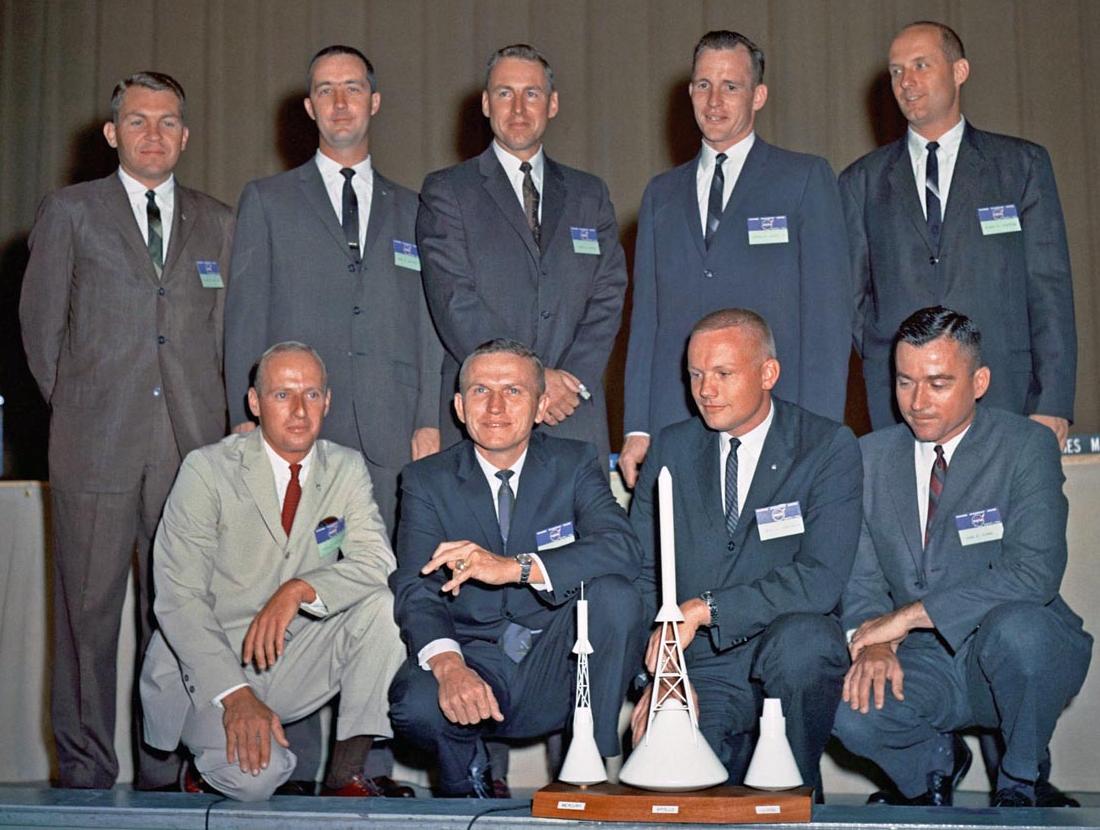 |
||
— The flight of Gemini 8: 16 March 1966 — all photos author's collection (unless otherwise noted) |
||
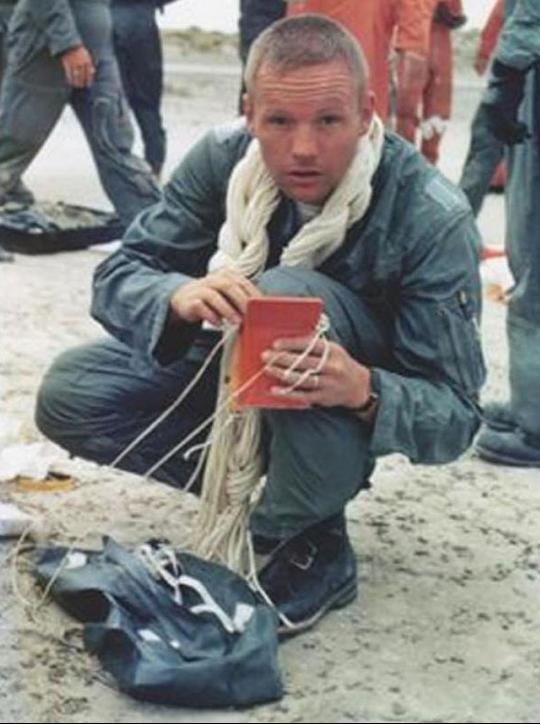 |
 |
||||
Official Gemini 8 crew portrait of David R. Scott and Neil Armstrong. |
|||||
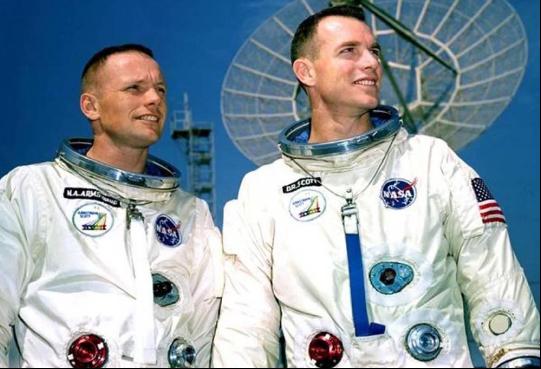 |
|||||
16 Aug. 1963. Neil during survival training at Stead AFB, NV. Around his neck are parachute lines that he can use to aid him when alone in the wilderness. |
|||||
Neil and Dave suited up in Gemini pressure suits with their GT-8 mission patch. |
|||||
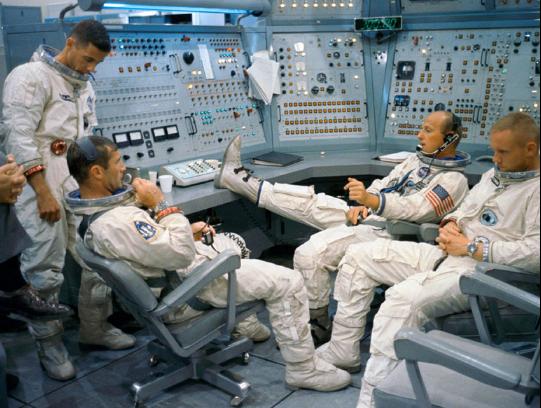 |
||||||
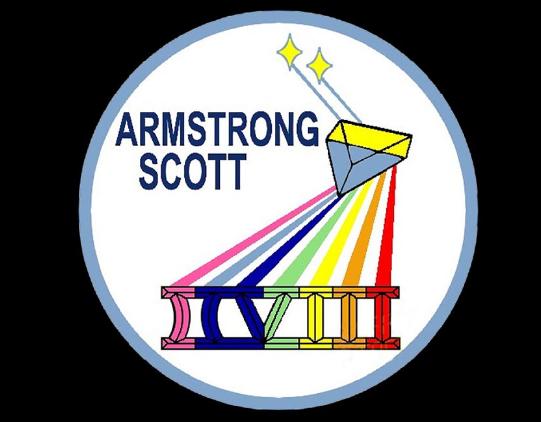 |
||||||
Neil (far right) and Elliott See (standing) served as the backup crew on Gemini 5. Prime crew for GT-5 were L. Gordon Cooper (seated next to See) and Pete Conrad. |
||||||
Gemini 8 mission patch featured the crew's focus on science. |
||||||
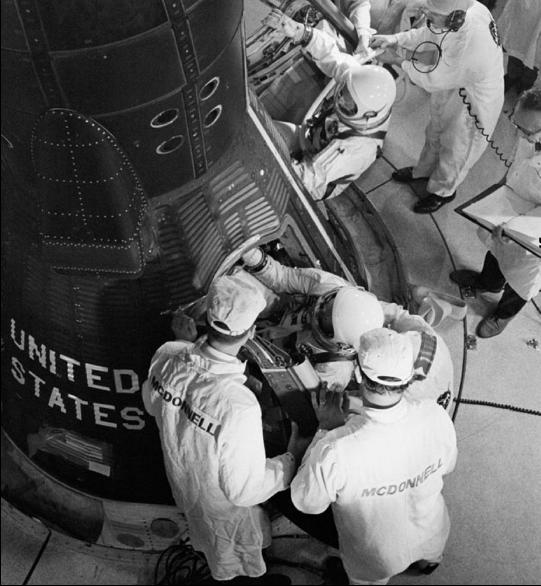 |
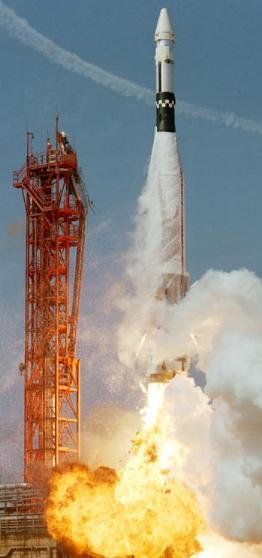 |
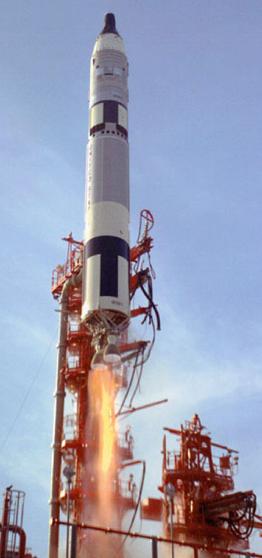 |
|||||||
The Atlas lifted off at 9:00 am EST 16 Mar. 1966, carrying the Agena docking vehicle into orbit (the silver and black stage just below the nose cone). The Gemini-Titan lifted off at 10:41 am to chase the Agena to the first orbital docking in spaceflight history. |
|||||||||
Inside the white room, Neil and Dave climb aboard their spacecraft. |
|||||||||
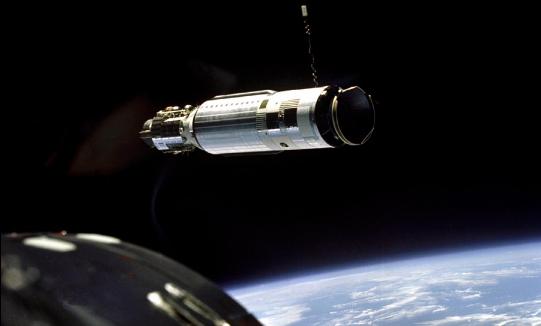 |
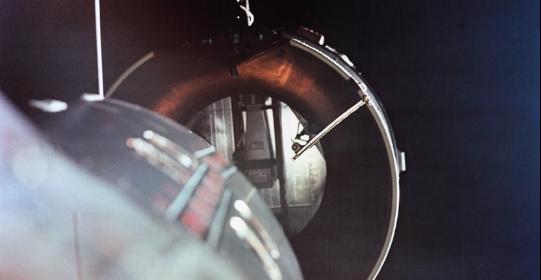 |
||||
(left and above) The Agena stage as Neil approached and just before docking. A Gemini thruster malfunctioned, sending the two vehicles spinning dangerously. Neil undocked, brought his spacecraft under control, and had to reenter immediately. |
|||||
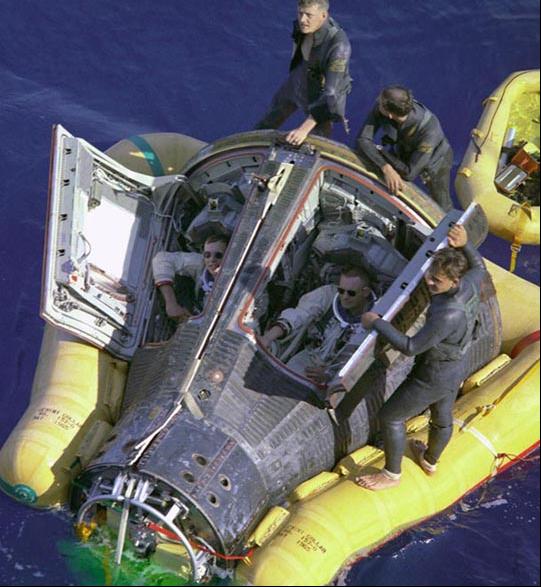 |
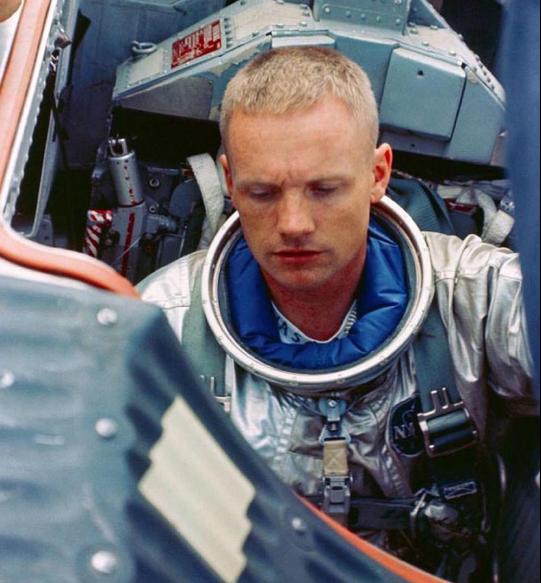 |
|||
Close-up of Neil in the GT-8 commander's seat. |
||||
Splashdown in the Pacific after a truncated mission of only 10 hrs 41 min 26 sec. |
||||
— The flight of Apollo 11: 16 to 24 July 1969 — |
||
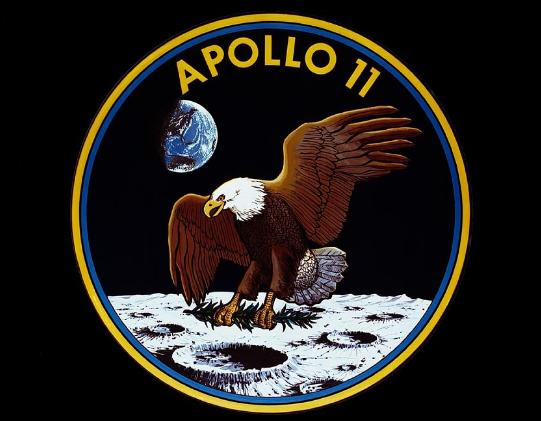 |
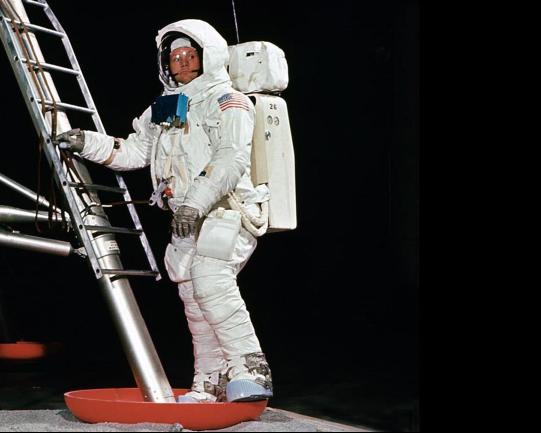 |
|||
The Apollo 11 crew patch. Note that there are no crew names as they represent all humankind going to the Moon. |
||||
Neil practices his "small step for (a) man." |
||||
 |
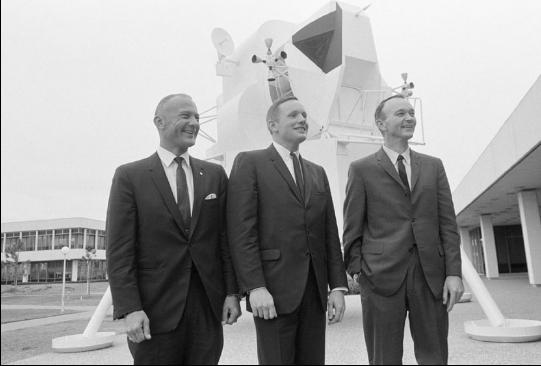 |
|||
12 Feb. 1969. Neil with the lunar landing trainer at NASA's Langley Research Center. |
Buzz Aldrin, Neil Armstrong, and Mike Collins in front of a Lunar Module mockup. |
|||
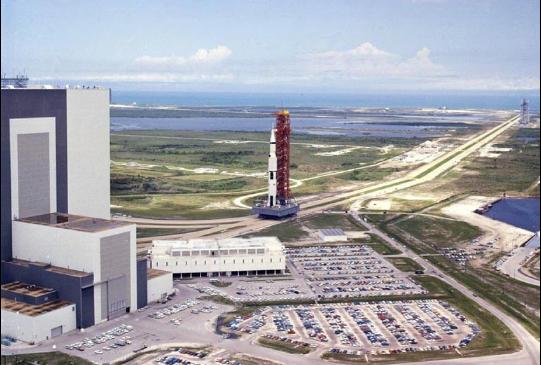 |
 |
|||
20 May 1969. The Saturn V (SA-506) carrying Apollo 11, moves toward the launch pad. |
Official crew portrait for Apollo 11: Armstrong, Collins, and Aldrin. |
|||
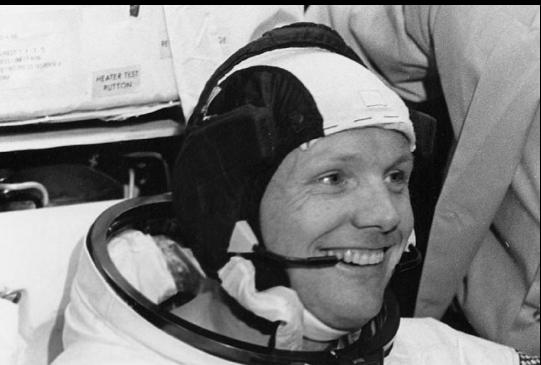 |
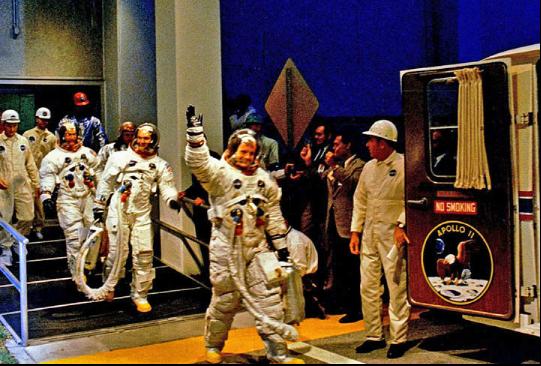 |
|||
Neil finishes suiting up prior to launch on the morning of 16 Jul. 1969. |
The crew, led by Neil, heads to the transfer van for the ride to Launch Complex 39A. |
|||
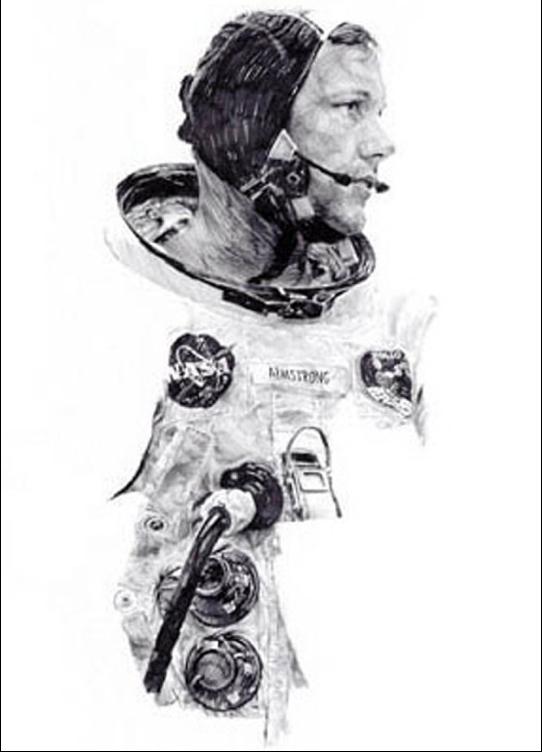 |
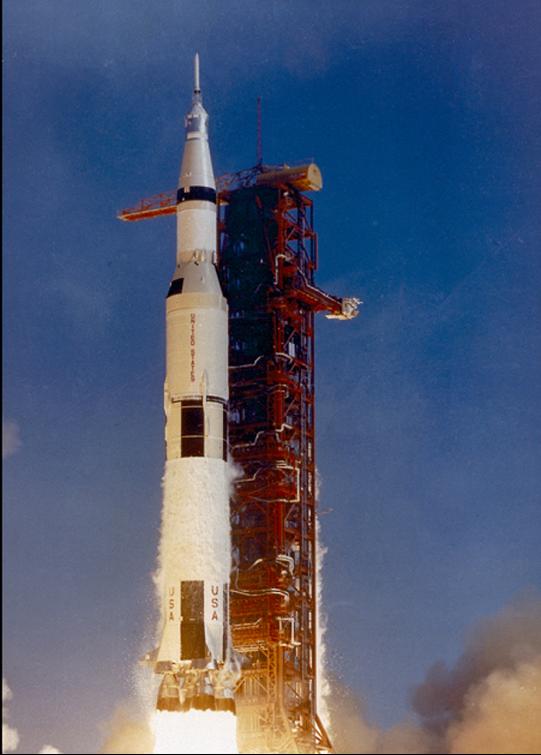 |
|||
Pencil sketch of Neil Armstrong on launch day by Paul Calle. |
The clock has started. Apollo 11 heads to the Moon 9:32 am EDT 16 Jul. 1969. |
|||
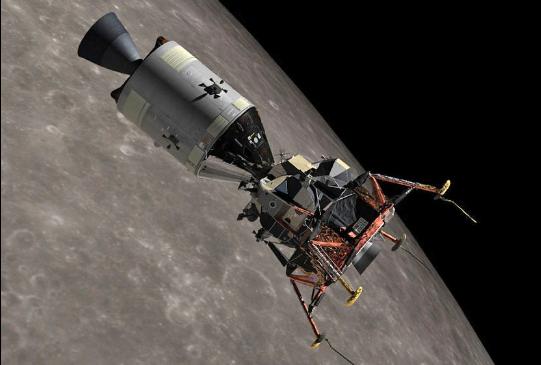 |
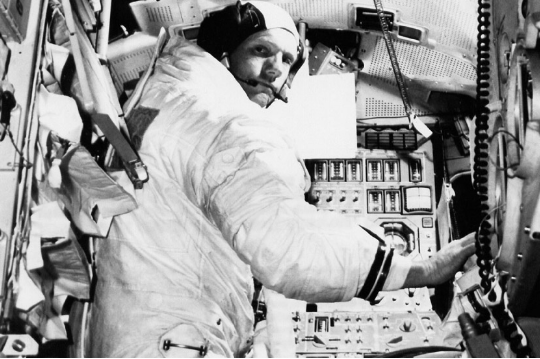 |
|||
Artist's impression of the Columbia and Eagle in lunar orbit. |
Neil at the controls of the Lunar Module. |
|||
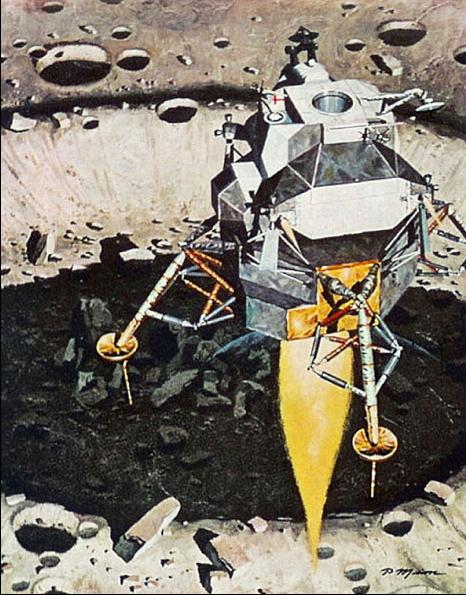 |
 |
||||
"Houston, Tranquility Base here. The Eagle has landed." |
|||||
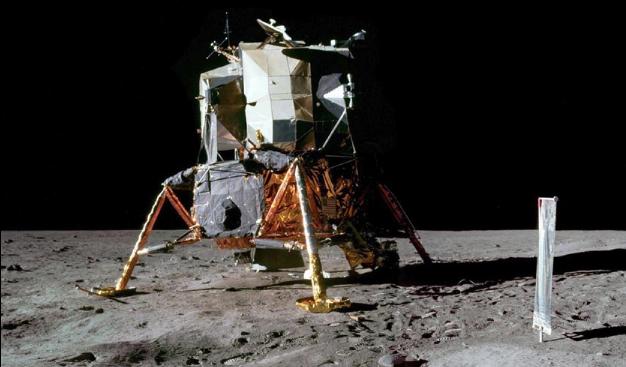 |
|||||
Neil pilots LM-5 across a boulder-strewn crater seconds before landing. artwork by Pierre Mion |
Eagle on the Moon, 20 Jul. 1969. The solar wind experiment is in the foreground. |
|||
 |
||
Neil carried the camera throughout the early parts of the Moonwalk, and thus got many photos of Buzz working on the surface. When the camera was handed off to Buzz, he took no photos of Neil, with the exception of the above image. With Neil in deep shadow it is almost happenstance that there is any photo of Neil during the EVA. |
||
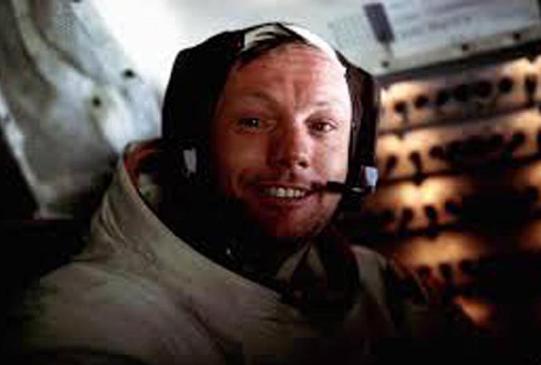 |
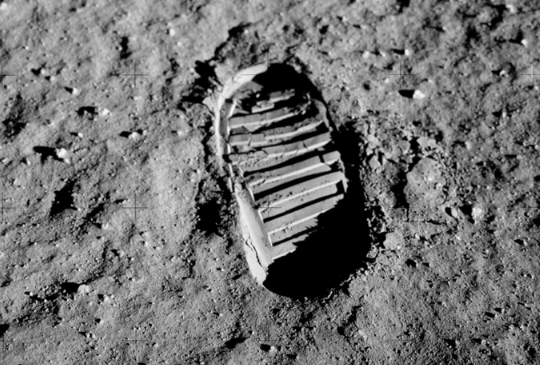 |
|||
A happy Neil back inside Eagle after completion of their lunar surface activities. |
||||
"That's one small step for [a] man, one giant leap for mankind." |
||||
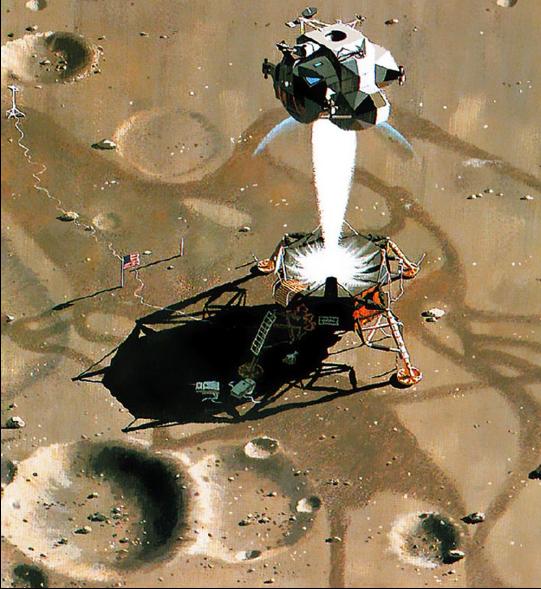 |
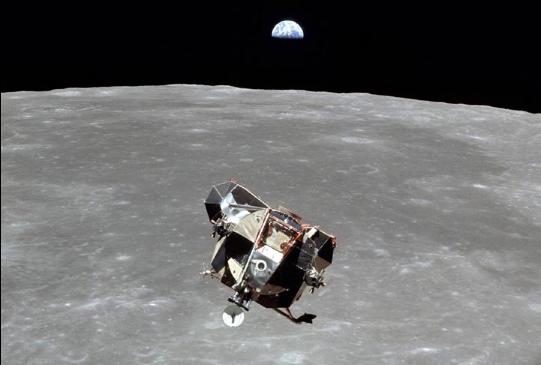 |
|||||||
Earthrise above the Eagle's ascent stage as it nears Columbia. |
||||||||
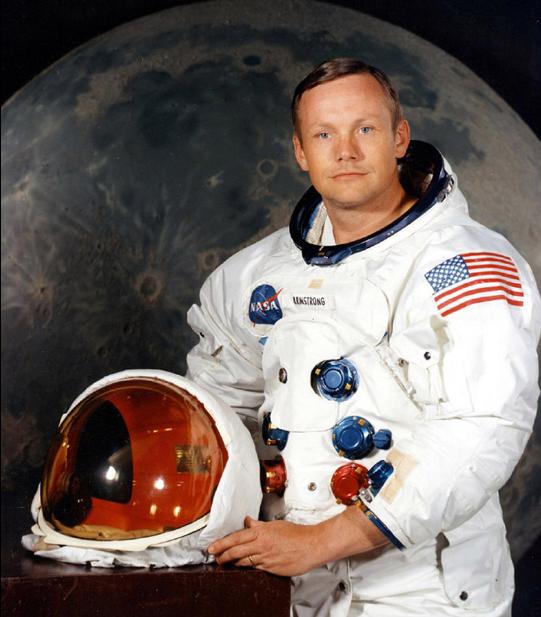 |
||||||||
The ascent stage of Eagle uses the descent stage as a launch pad to return to lunar orbit, and rendezvous with the Command/Service Module Columbia. artwork by Pierre Mion |
||||||||
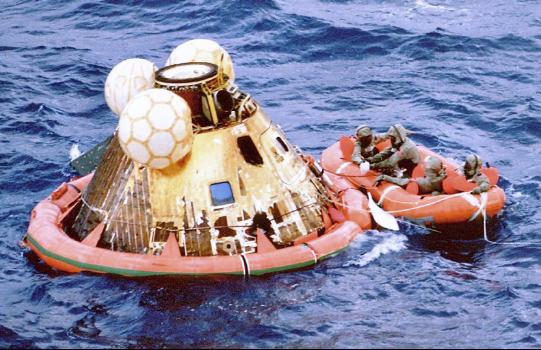 |
||||||||
Columbia splashed down in the Pacific Ocean at 12:49 am EDT, 24 Jul. 1969. The crew and spacecraft were recovered by the aircraft carrier, the USS Hornet. |
||||||||